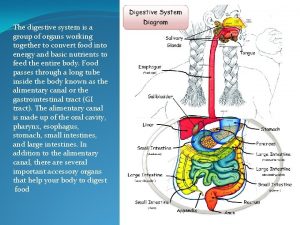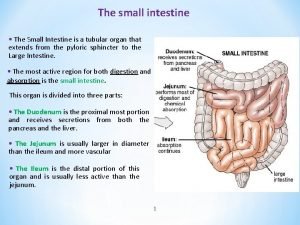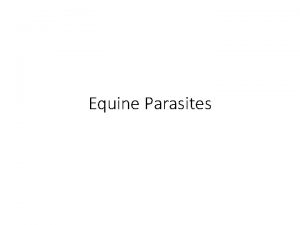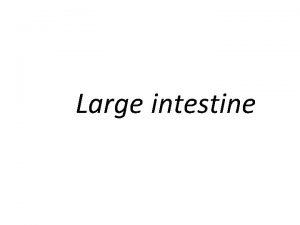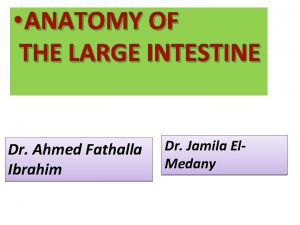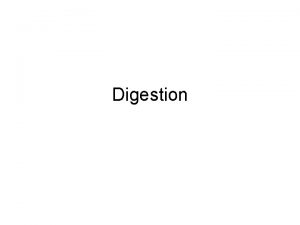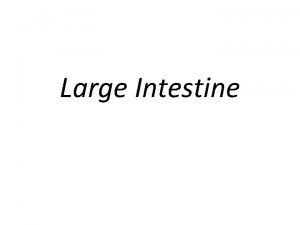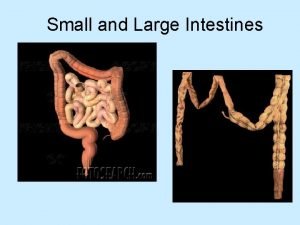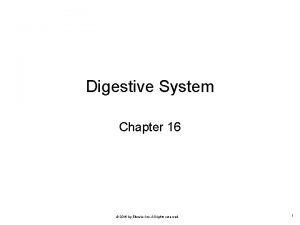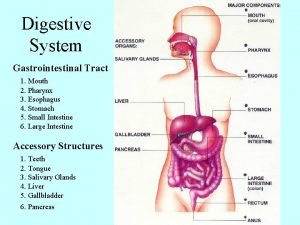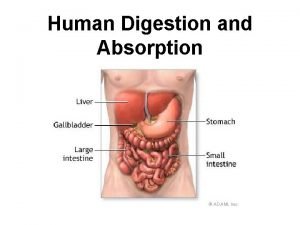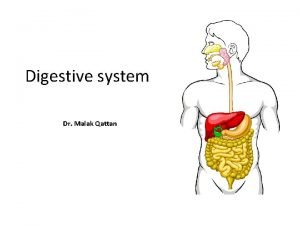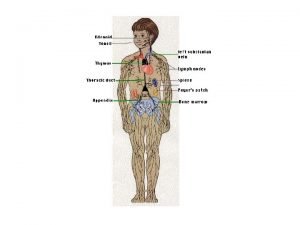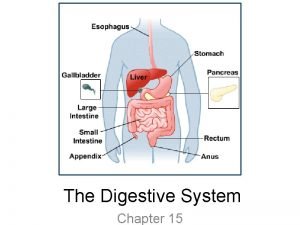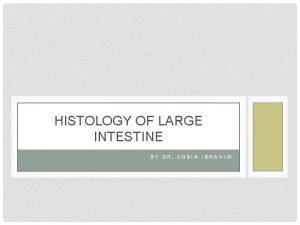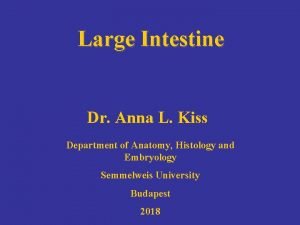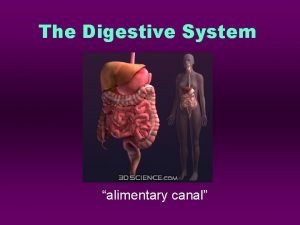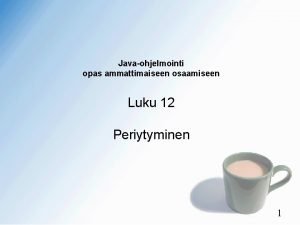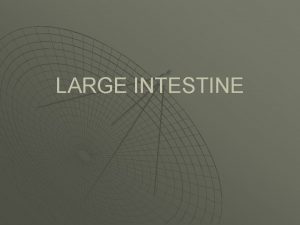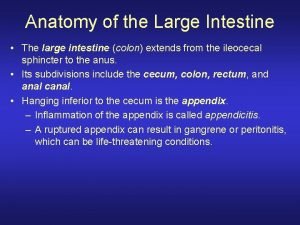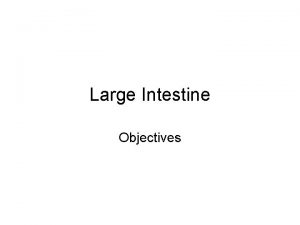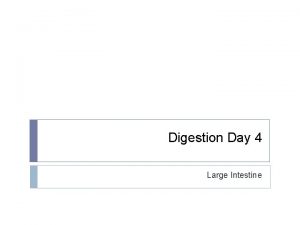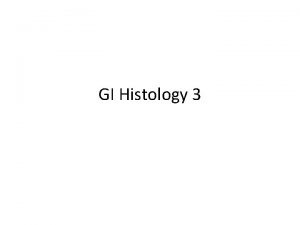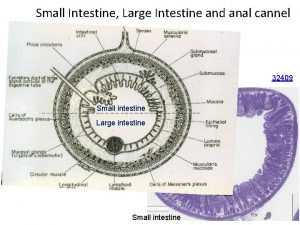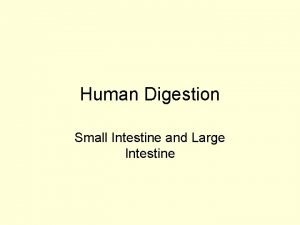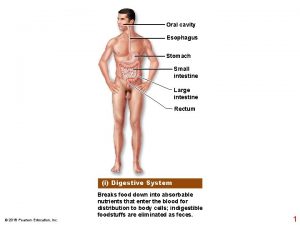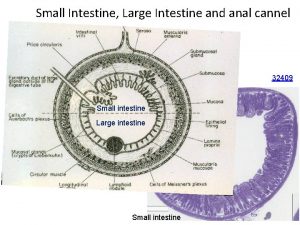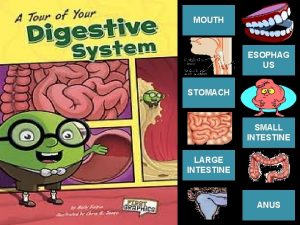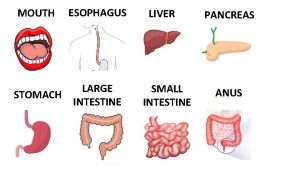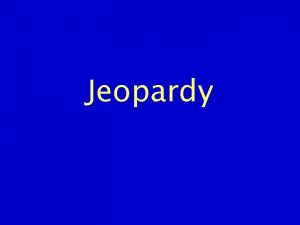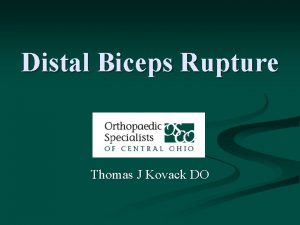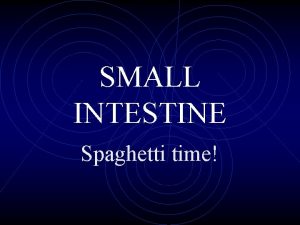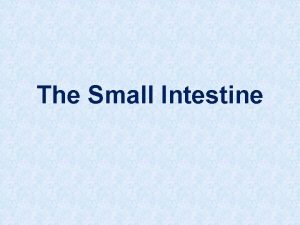LARGE INTESTINE LARGE INTESTINE Extends from the distal





























- Slides: 29

LARGE INTESTINE


LARGE INTESTINE • Extends from the distal end of the ileum to the anus. • Consists of caecum, ascending colon, transverse colon, descending colon, sigmoid colon, rectum and anal canal. • Absorbs fluids and salts from the gut contents.

HISTOLOGY

MUCOSA • Absence of villi • Raised into numerous cresentic mucosal folds. • Epithelium: • Columnar cells with brush border. • Large number of Goblet cells. • Enteroendocrine cells/enterochromaffin cells/argentaffin cells. • Stem cells.

• Tubular intestinal glands/Crypts of lieberkuhn in lamina propria also contain columnar cell, goblet cell, entero endocrine cell and stem cell. • The columnar cells with striated border absorb excess water and electrolytes. • The goblet cell number increases caudally down the intestine. • They secrete mucus that lubricates and facilitates the passage of the semisolid intestinal contents. • Stem cells differentiate and replace the damaged epithelial cells.

• ENTEROENDOCRINE CELLS/ ENTEROCHROMAFFIN CELLS/ARGENTAFFIN CELLS: • The cells contain black infranuclear granules. • They stain with silver salts. • They produce amines like 5 -HT. • These cells are positive to chromaffin reaction (with potassium dichromate) and hence called enterochromaffin cells.

SUB MUCOSA • Sub mucous layer: contains blood vessels, nerves, lymphatics, areolar connective tissue. Submucosa often contains fat cells with pas positive granules termed muciphages.

MUSCULARIS EXTERNA • Inner circular and outer longitudinal layer of muscle. • Outer longitudenal layer is unusual. • Most of the fibres form three thick bands called taenia coli. • As the taenia are shorter in length the intestine here is sacculated called haustrations. • A thin layer of longitudinal fibres is present in the intervals between the taenia coli.

SEROSA • The serous layer is the peritoneal covering. • It is missing over the posterior aspect of ascending and descending colon and present in other parts. • It has pouch like processes filled with fat called appendices epiploicae.







HISTOLOGY OF APPENDIX

GROSS STRUCTURE OF APPENDIX

• Narrowest part of the gut. • Has a narrow lumen and no villi seen. • The crypts are poorly developed. • The longitudenal muscle coat is uniformly thick and has no taenia coli. • The lamina propria and submucosa is full of lymphoid nodules. • The lymphoid tissue is absent at birth and reaches a maximum at ten years and then progressively decreases with age.

MUCOSA Mucous membrane similar to large intestine: simple columnar with large number of goblet cells. Lamina propria consists of much more lymphatic tissue extending onto submucosa and has few intestinal glands or Crypts of lieberkuhn. Muscularis mucosa is not well developed and missing in some areas.

SUB MUCOSA Consists of abundant lymphatic nodules, connective tissue, blood vessels and nerve plexus. MUSCULARIS EXTERNA Inner circular muscle fibers. Outer longitudinal muscle fibers and no taenia coli. SEROSA Made up of mesentery.



Mucosa Simple columnar epithelium with numerous goblet cells Lamina propria Crypts of Lieburkuhn Confluent lymphatic nodules





• Summary: § Proximal to distal 1. Increase in lymphocytes. 2. Increase in Goblet cells. 3. Decrease in villi.
 Esophagus stomach small intestine large intestine
Esophagus stomach small intestine large intestine The small intestine extends from the
The small intestine extends from the Equine
Equine Blood supply to bowel
Blood supply to bowel Preaortic lymph nodes
Preaortic lymph nodes Large intestine function in digestive system
Large intestine function in digestive system Cecum anatomy
Cecum anatomy Large intestine function in digestive system
Large intestine function in digestive system Peristalsis definition
Peristalsis definition Labelled diagram of a tooth
Labelled diagram of a tooth Large intestine histology
Large intestine histology Bile and pancreatic juices are secreted in the
Bile and pancreatic juices are secreted in the Orange juice ph
Orange juice ph Large intestine function
Large intestine function Lymphoid tissue in colon
Lymphoid tissue in colon Characteristics of water soluble vitamins
Characteristics of water soluble vitamins Large intestine anatomy
Large intestine anatomy Bicuspids
Bicuspids Histology of large intestine
Histology of large intestine Enteroendocrine cells
Enteroendocrine cells J shaped muscular bag
J shaped muscular bag Plicae semilunaris colon
Plicae semilunaris colon Rugae
Rugae Part of large intestine
Part of large intestine Bap coverage extends to mobile equipment as long as it is
Bap coverage extends to mobile equipment as long as it is Thyrohyoid membrane
Thyrohyoid membrane Runtimeexception extends exception
Runtimeexception extends exception Java periytyminen
Java periytyminen Java extends
Java extends Includes vs extends use case
Includes vs extends use case
